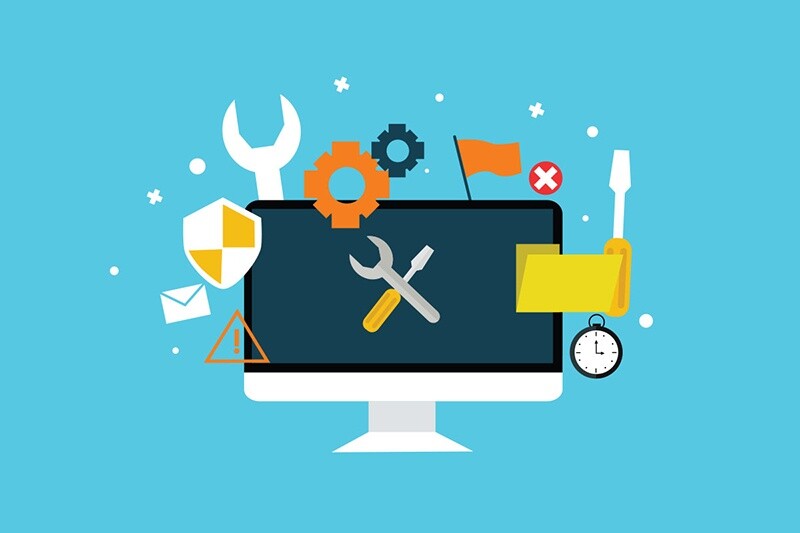➤1. Visit Your Site
Visiting your site’s front-end and clicking around to a few key pages is a great way to catch any potential issues. So, once a week, head to your site and browse a few of the key pages to make sure everything is still working as you expect it to.
➤2. Moderate Comments
If you allow comments on your site, you’ll need to spend some time moderating them each week to make sure you approve real comments and flag/delete spam comments. To help you save time on comment moderation, you can consider using an anti-spam plugin.
➤3. Back Up Your Site
Having a recent backup is essential to secure your site’s data. For most sites, weekly backups are a good frequency, but your site’s optimal backup frequency really depends on how often you’re making changes and adding content to the database.
➤4. Apply Updates
If you want to secure your website and keep it functioning, promptly applying updates is essential. Every week, you should check in to see if there are any updates for the WordPress core, plugins, or themes.
➤5. Test Key Forms and Features
If you have important forms or features (like a check out process), it’s important to regularly test them. For some sites, you might want to perform this monthly instead of weekly. It really depends on how essential the forms/features are to your business.
➤6. Check Google Search Console
If Google encounters any issues with your site’s SEO or mobile optimization, it will share alerts in Google Search Console. For that reason, it’s important to frequently check-in to see if Google has flagged any issues with your site.
➤7. Run Performance Tests
How quickly your site loads plays a key role in user experience and conversion rates and even has a small positive effect on SEO. It’s important to periodically assess your site’s performance to catch any potential issues. Once a month is a good frequency for most websites, though you might want to perform this weekly for mission-critical sites.
➤8. Analyze Your Site’s Traffic
To understand what’s happening on your site, you should be using some type of web analytics tool such as Google Analytics. Most webmasters don’t need to check that often, but it is still useful to check in once a month or so to keep track of what’s happening and notice any trends.
➤9. Run a Security Scan
Because WordPress is so popular, it’s an attractive target for malicious actors. To make sure your site doesn’t become a victim, it’s good to run regular security scans to catch potential issues.
➤10. Optimize Your Site’s Database
Your site’s database is what stores all of your content, theme settings, plugin settings, etc. Over time, it can generate a lot of clutter via things like post revisions, transients, spam comments, etc. For that reason, it’s a good idea to periodically optimize your site’s database to remove all of
this junk.
➤11.Check for Broken Links or 404 Errors
Broken links or 404 errors are horrible for user experience on your site because they get in the way of visitors finding what they’re looking for. To check your site for broken links, you can use a plugin.
➤12. Verify Your Site’s Backups
A backup is only good if it works. So while you should take backups of your site weekly, it’s also important to periodically verify that those backups actually work. You can do this by restoring the backup of your site to a staging site or using a local WordPress development environment.
➤13. Consider Whether You Need New Hosting
As your site grows, it’s easy to grow so much that you outgrow your current hosting. This is a good problem to have, but it might necessitate upgrading to a higher-tier plan at your host or maybe even moving to a better host.
➤14. Change Your WordPress Password
All the WordPress security tips in the world don’t matter if a malicious actor gets their hands on your username and password. For that reason, it’s a good idea to follow good password principles and change your WordPress admin password once per year or so.
➤15. Audit Your Content
A content audit is a great way to improve your site’s SEO and user experience. With it, you can double-down on your site’s top-performing content and also fix its weakest content.
Essentially, your goals with a content audit are to:
1. Update and improve your top-performing content to help it keep its rankings or perform
even better.
2. Remove ineffectual content and either merge its content into other content or redirect it
to other content.
➤16. Audit Your Plugins
Every plugin that you add to your site is a potential security vulnerability and a potential drag on your site’s performance. That doesn’t mean you shouldn’t use plugins, but it does mean you should be careful to make sure you’re only using essential plugins. For that reason, it’s a good idea to consider once per year whether your site is still getting benefits from each plugin that you’re using.
by Elementor
